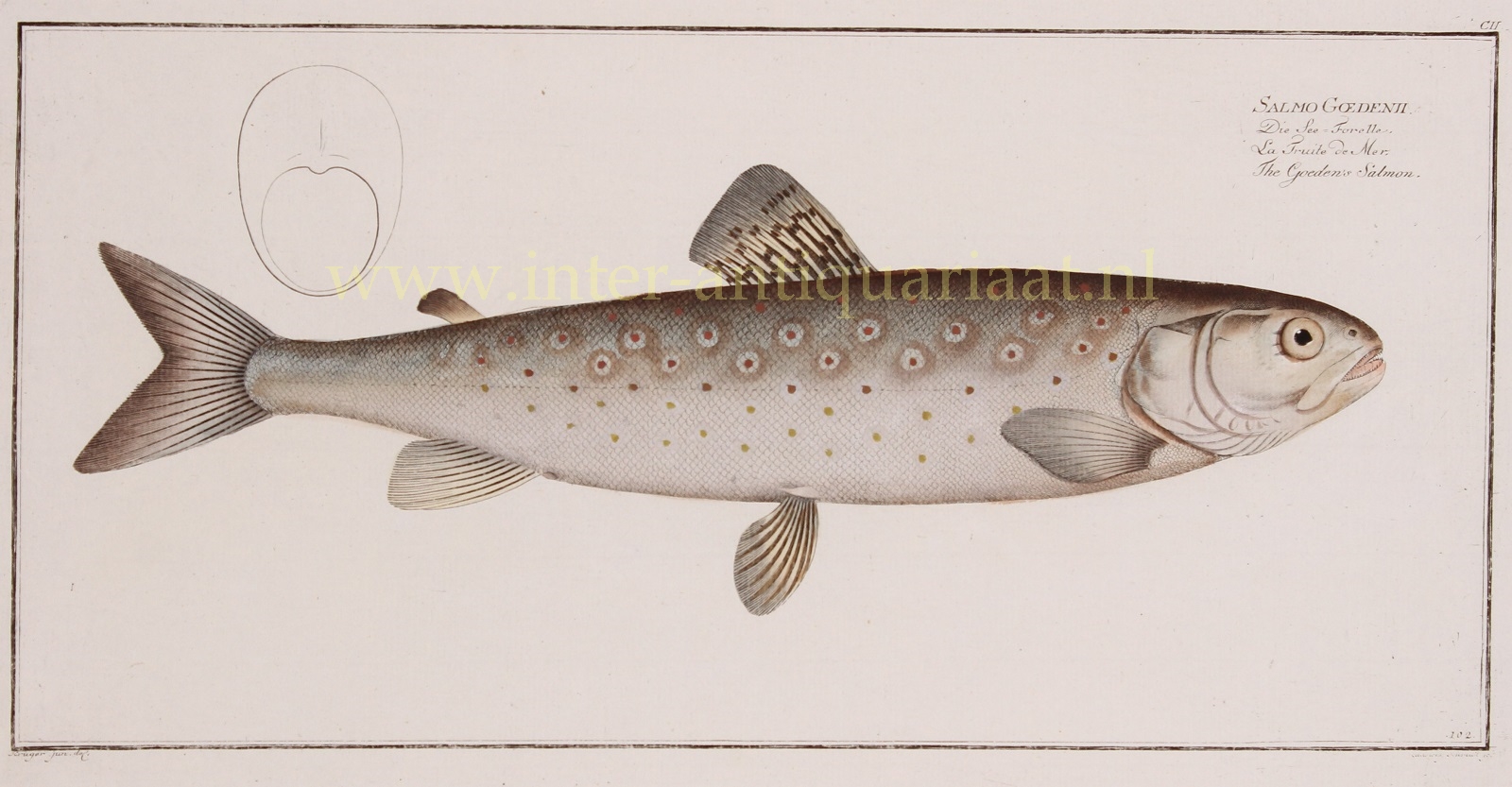SEA TROUT
“Salomo Goedenii/Die See-Forelle/La Truite de Mer/The Goeden’s Salmon” (plate 102), copper engraving made by Ludwig Schmidt after the drawing of Krüger jr, for Markus Elieser Bloch‘s “Allgemeine Naturgeschichte der Fische” published in Berlin between 1782 and 1795. With original hand colouring. Size: 19 x 38 cm.
According to Bloch (1723-1799) in his Allgemeine Naturgeschichte der Fische, a 12-volume, beautifully illustrated comprehensive work on fishes: “The small head and the red spots on the sides, which are in a white ring, distinguishes this fish from the rest of its kind. In the gill membrane one counts ten, in the pectoral fin fifteen, in the ventral flap ten, in the afar fin eleven, in the caudal fin eighteen and in the dorsal fin twelve rays. The body is elongated and incomparably thinner than in the other types of trout. The mouth is wide open to both jaws, and the palate is armed with sharp teeth. The eyes are large and have a black star in a silver-colored ring. The cheeks, the gill covers, the sides and the belly are silver-colored. The gill opening is wide, the back, the forehead, the adipose and caudal fin brownish, the other areas are yellowish, the back is covered with brown spots and the caudal fin is fork-shaped. The sideline is straight and closer to the back than the abdomen. The anus, like the rest of the trout species, is located in the vicinity of the caudal fin and an appendage is visible on the ventral fin. We find this trout in the Baltic Sea and I have received several of them from my friend, district councilor Göden, of Rügenwalde (Western Pomerania) (Hence Bloch’s name of the fish). It grows to a foot and a half long and is found to be a pound or two in weight. It has a white, lean but tasty meat which is usually eaten with oil and vinegar after it has been boiled in salted water with sage. In the area from which I received it, it is known as the silver trout.”
Bloch’s labour on the “Allgemeine Naturgeschichte der Fische” occupied a considerable portion of his life, and is considered to have laid the foundations of the science of ichthyology. The publication was encouraged by a large subscription, and it passed rapidly through five editions in German and in French. Bloch made little or no alteration in the systematic arrangement of Peter Artedi and Carl Linnaeus, although he was disposed to introduce into the classification some modifications depending on the structure of the gills. To the number of genera before established, he found it necessary to add nineteen new ones, and he described 276 species new to science, many of them inhabitants of the remotest parts of the ocean, and by the brilliancy of their colours, or the singularity of their forms, as much objects of popular admiration as of scientific curiosity.
Bloch is considered the most important ichthyologist of the 18th century.
Price: Euro 350,-


